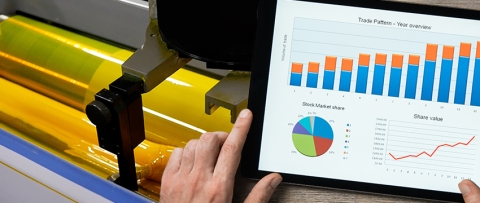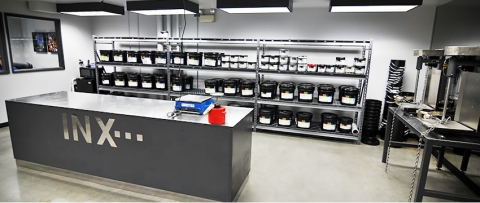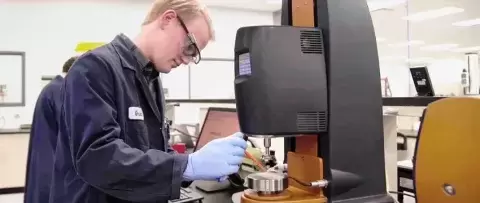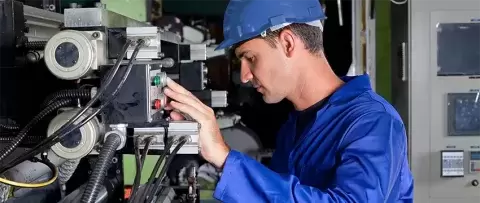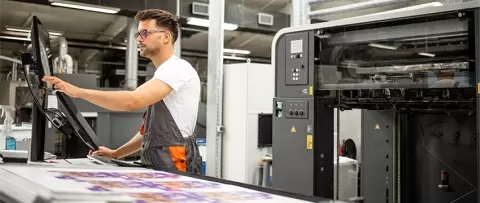How to Improve Bond Lamination Strength for Plastic Card Printing
Plastic cards, such as credit cards, loyalty cards, and membership cards, have seamlessly integrated into our daily routines, serving as indispensable tools. In this article, we will explore various techniques and tips to improve bond lamination strength for plastic card printing. With expected life spans of up to five years, the lamination bond strength of the protective overlay to the printed card substrate is critical to the durability and security of the card. This bond strength between the card substrate and the plastic film overlay plays a pivotal role in enhancing the card's visual appeal and shielding it from potential damage due to delamination, ensuring a prolonged lifespan.
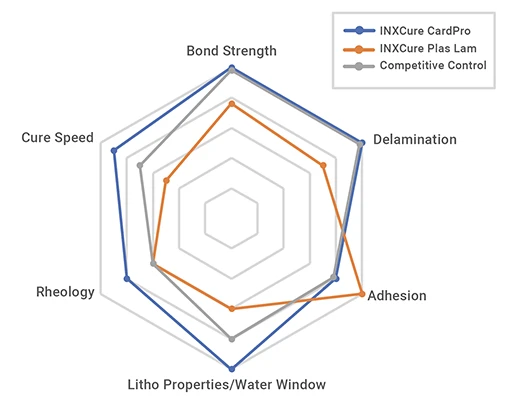
In side-by-side industry comparisons, INXCure CaroPro's adhesion, cure response, bond strength, and on-press stability can't be beat.
1. Select the Right Materials
The first step in ensuring a strong bond and successful lamination is to choose the right materials. This includes the core material [usually PVC (Poly Vinyl Chloride) or PET (Polyethylene Terephthalate)], the adhesive-backed overlay, and the ink. These crucial choices lay the groundwork for durability and resilience in plastic card printing. The first thing to consider is the ink to be used to print the plastic card. The ink must be carefully formulated to achieve good adhesion to a wide variety of plastic card substrates. It must also be able to form a strong bond with the adhesive-backed overlay. Additionally, the ink must have good lithographic properties to be able to run well on today’s high-speed presses.

Select a high-quality, adhesive-backed plastic film overlay to help provide maximum lamination bond strength. Choose a durable, pick-resistant plastic card stock with sufficient surface energy for successful and seamless printing. A careful selection of plastic card stock, overlay, press consumables, and ink ensures not only a superior end product but also minimizes potential issues during production, resulting in a seamless and durable plastic card.
2. Temperature and Humidity Control
Environmental factors can affect the lamination process and should be controlled to help ensure successful outcomes. Temperature and humidity levels near the laminator are variables that can impact the overlay adhesive's effectiveness and the overall lamination quality. Maintaining a temperature and humidity-controlled environment is not only recommended for optimum press performance while printing the plastic cards but will also help ensure proper adhesion during the lamination process and prevent issues like wrinkling or bubbling. If the area where you are laminating is too humid, condensation can form on laminating equipment cooling towers. The condensation has the potential to drip into the laminator which can lead to many problems. Striking the right balance in environmental conditions remains essential to achieve efficient, consistent, and durable lamination, safeguarding the integrity of the final product. Most manufacturers recommend a temperature range between 18°C to 25°C (65°F to 77°F) and a humidity range of 40% to 60%.
3. Proper Collation and Lamination Equipment
Investing in quality collation and lamination equipment is essential for achieving strong bond lamination consistent across the whole sheet of plastic cards. The plastic card collator will ensure that the layers to be laminated together are properly aligned and collated together, preparing them for the lamination line. Careful selection of the collator will ensure proper layer alignment and higher throughput. Modern lamination machines are designed to provide a high degree of accuracy in temperature and pressing force necessary for a consistent and high-quality bond between the various layers of the plastic card laminate structure. Up-to-date technology enhances the final product's quality and optimizes the efficiency of the collation and lamination processes. Moreover, investing in reliable equipment often leads to fewer downtimes and reduces the risk of errors, contributing to higher productivity and superior lamination results. Regular maintenance schedules, calibration, and adherence to manufacturer guidelines for upkeep are imperative to prolong the lifespan and efficiency of these valuable machines, ensuring consistent, high-quality output.
4. Optimize the Lamination Line Parameters
Pressure, temperature, and dwell time during the lamination process are critical factors in achieving a strong lamination bond and a quality plastic card. Ensure that the pressure, temperature, and dwell time settings are consistent with the specifications recommended by the plastic substrate and overlay suppliers. Optimizing the process for your specific plastic card layout can require precise adjustments on the lamination machine. Maintaining the right temperature, pressure, and dwell time throughout the lamination process are the most important factors in achieving a strong bond. Dialing in the right settings ensures uniformity across all cards, preventing potential disparities in lamination quality from one side of the sheet to the other. It is important to not overcook the sheet by using too high of a lamination temperature or too long of a dwell time. This can cause color shifts of the ink, substrate, and overlay. Equally important is not to apply too much pressure, which can distort the substrate or overlay. Spending the time to optimize the lamination line parameters is worth every second and will reduce downtime and waste.
5. Properly Store and Handle Materials
The way you store and handle materials can also impact bond lamination strength. Always store materials in a clean, dry, and dust-free environment. When handling materials, use clean, lint-free gloves to prevent contamination. Avoid touching the adhesive side of overlays, as oils and dirt from your skin can affect the bond.
Storage conditions significantly impact the quality of materials. Storing materials in a cool, dry, clean, and dust-free environment safeguards their efficacy. Exposure to moisture or dust particles could compromise the adhesive-backed overlay’s effectiveness, potentially leading to weaker bonds during lamination. Moreover, maintaining a controlled environment during the handling process is essential. Minimizing exposure to excessive humidity or extreme temperatures helps preserve the materials' quality, ensuring optimal performance during the lamination process. Adhering to these meticulous handling practices not only contributes to the strength of bond lamination but also upholds the overall quality standards of the finished plastic cards.
6. Test and Quality Control
Regularly pull plastic card samples and test their lamination bond strength. This is an important part of the quality control process. It ensures that your process is meeting quality standards, such as lamination pull strength specifications, and that the entire process is robust and in control. The bond strength of the plastic film overlay to the printed card substrate can be tested with specialized pull testing instruments equipped with force gauges. They can be accessorized to fit your specific pull testing needs. Invest in a pull tester to regularly test the lamination bond strength of the manufactured plastic cards to keep your lamination process in control. Monitor the results and adjust as necessary to maintain lamination bond strength, consistency in color, and uniformity in quality across the printed sheet of plastic cards.
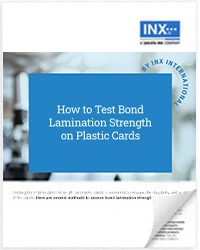
7. Training and Education
Lastly, ensure that your staff is well-trained and educated in the plastic card printing and fabrication process. Knowledgeable operators can identify issues, troubleshoot problems, and make the necessary adjustments to achieve strong bond lamination. Well-educated staff members are not only adept at troubleshooting but also proactive in implementing preventive measures. They can anticipate challenges, ensuring that potential issues are preemptively addressed, thus minimizing the risk of subpar lamination outcomes. The quality of your finished plastic cards will be directly proportional to the level of education and training of your workforce. Work with suppliers and equipment manufacturers to obtain information about the best practices for using their products. Use this information to educate your staff and implement programs to ensure these practices are being followed. Empowering your staff with in-depth knowledge equips them to make precise adjustments as unexpected problems arise throughout the printing and lamination processes. This ability to adapt and fine-tune the machinery, settings, or procedures in real time is instrumental in achieving the results you want and producing consistent quality.
Conclusion
Achieving strong bond lamination strength for plastic card printing is crucial for producing high-quality and durable cards. By selecting the right materials, maintaining the proper environment, using the correct equipment and techniques, and implementing quality control measures, you can maximize the lamination bond strength of your plastic cards. With a strong bond, your cards will withstand the test of time and continue to serve their intended purpose effectively.
The pursuit of strong bond lamination in plastic card printing is not merely a technical endeavor—it is an amalgamation of expertise, precision, and a commitment to excellence. It is this commitment that not only ensures the production of superior-quality plastic cards but also solidifies trust and reliability in every finished product. As technology advances and methodologies evolve, this dedication to quality remains steadfast, cementing its position as the cornerstone of the industry's success.







